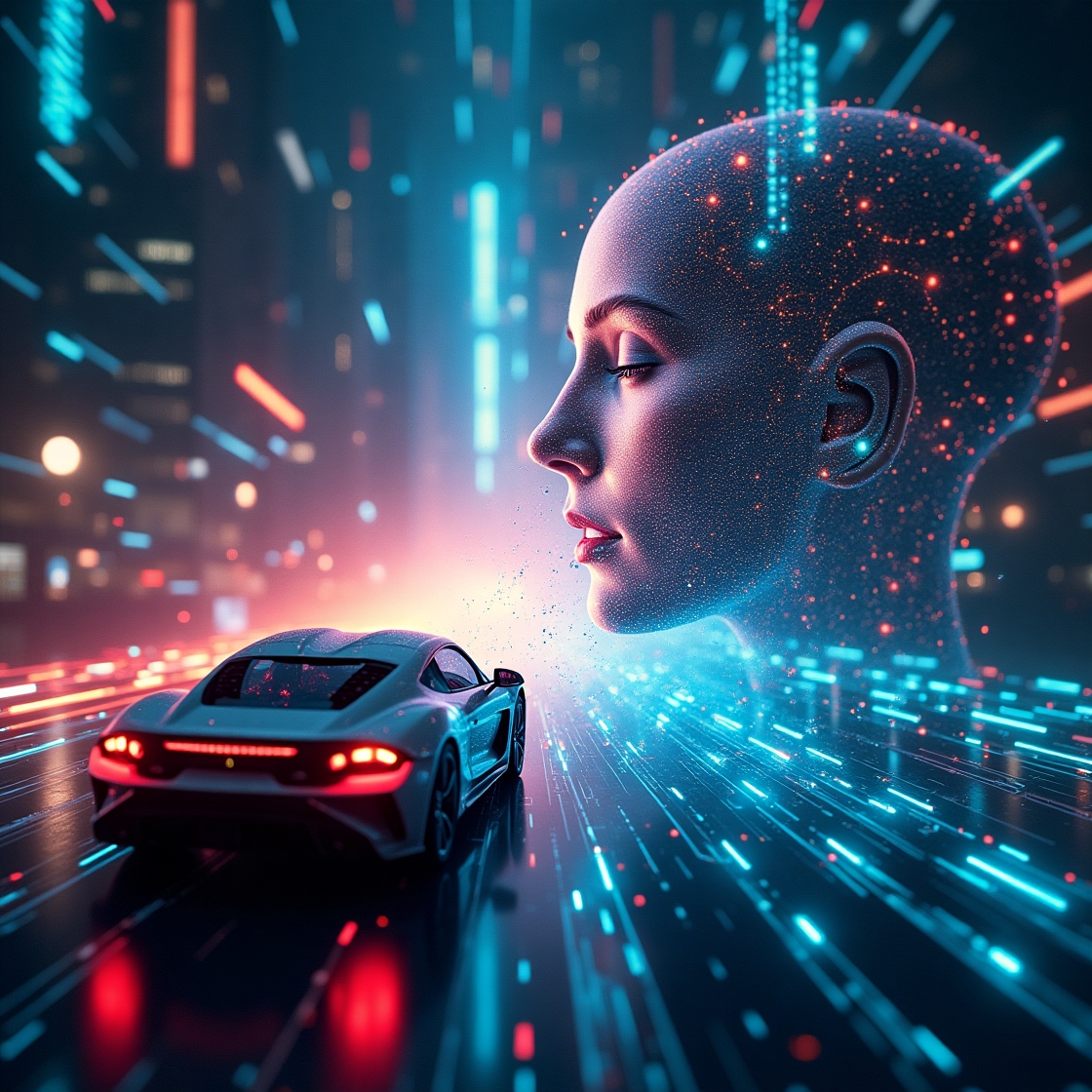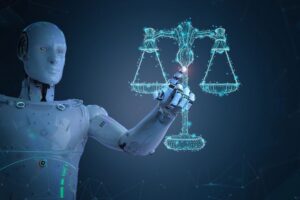Artificial Intelligence (AI) has moved beyond labs and research papers. It’s now a central force shaping how we work, live, and connect. From personalized healthcare to real-time fraud prevention, the scope of AI applications is vast and growing rapidly. Businesses leverage it for efficiency, governments use it for planning and security, and individuals interact with it daily through smartphones, apps, and smart devices.
In this article, we’ll break down four of the most powerful and influential examples of AI in use today, exploring how each is transforming its respective field and impacting our daily lives. We’ll also touch on emerging areas that hold immense potential for future development.
1. Artifcal intaligence in Healthcare: Diagnostic Tools and Personalized Medicine
Keywords: Examples of AI in Healthcare, Artificial Intelligence, Machine Learning, Predictive Analytics
Healthcare is arguably the most impactful domain where artificial intelligence is making measurable differences. AI technologies are enabling faster diagnoses, more accurate assessments, and targeted treatments that are tailored to the individual patient.
AI-Powered Diagnostic Tools
One of the biggest challenges in medicine is early and accurate diagnosis. Delayed or missed diagnoses can lead to worsening health conditions and even fatalities. AI-driven diagnostic systems use machine learning and deep learning algorithms to analyze complex datasets—like medical imaging, genetic information, and patient records—to detect diseases with high accuracy.
Example: Google’s DeepMind has built a system capable of detecting over 50 eye diseases using retinal scans, matching or surpassing the performance of top ophthalmologists. Another example is IBM Watson Health, which can analyze radiology images and assist doctors in identifying patterns associated with diseases like cancer.
Personalized Medicine
AI enables healthcare providers to tailor treatments based on individual health profiles. Predictive analytics helps doctors identify which patients are at risk for chronic conditions or adverse drug reactions. Machine learning models analyze factors like genetic data, lifestyle habits, and medical histories to recommend customized treatments.
This personalized approach not only improves outcomes but also reduces the trial-and-error process commonly associated with treatment plans.
Benefits at a Glance:
- Faster and more accurate diagnoses
- Reduced medical errors
- Lower healthcare costs
- Improved patient outcomes
2. AI in Finance: Fraud Detection and Algorithmic Trading
Keywords: AI Applications in Finance, AI Use Cases, Deep Learning, Predictive Analytics
The financial industry was among the earliest adopters of AI technologies, leveraging them to improve security, speed, and efficiency.
Fraud Detection
With billions of transactions occurring every day, traditional fraud monitoring methods can’t keep up. AI excels at identifying unusual patterns and behaviors in massive datasets. Using deep learning and predictive analytics, financial institutions can detect and prevent fraudulent transactions in real time.
Example: Mastercard uses AI to analyze transactions globally, flagging suspicious activity instantly. This not only protects consumers but also enhances trust in digital transactions.
Algorithmic Trading
AI plays a pivotal role in financial markets through algorithmic trading, where trading decisions are made based on data analysis and machine learning models. These algorithms can process market trends, news feeds, and trading data faster than any human, allowing firms to make split-second decisions that can yield significant profits.
Example: Hedge funds and investment banks use AI systems to adjust portfolios automatically, balancing risk and return based on current market conditions.
Benefits at a Glance:
- Real-time fraud prevention
- Increased trading efficiency
- Reduced human error
- Data-driven investment strategies
3. AI in Customer Support: Chatbots and Virtual Assistants
Keywords: AI in Customer Support, Natural Language Processing, AI Applications, Neural Networks
Customer service is no longer confined to call centers or long email chains. AI is revolutionizing how companies interact with their customers, delivering faster and more personalized support.
Chatbots
AI-powered chatbots can answer common customer questions, guide users through processes, and even troubleshoot problems. These bots use natural language processing (NLP) and neural networks to understand and respond to human language in a meaningful way.
Example: Many e-commerce sites use chatbots to handle inquiries about order status, return policies, and product recommendations. Chatbots like those used by Shopify or Drift handle thousands of interactions per minute with minimal human oversight.
Virtual Assistants
Beyond chatbots, AI virtual assistants like Amazon Alexa, Google Assistant, and Apple Siri help users set reminders, search for information, and control smart home devices. In business environments, AI assistants can schedule meetings, draft emails, and organize tasks.
Human-Agent Collaboration
AI tools also assist human agents by providing suggested replies, pulling up customer data, and analyzing sentiment during live chats. This makes customer support teams more efficient and effective.
Benefits at a Glance:
- 24/7 customer service
- Reduced response times
- Improved customer satisfaction
- Lower operational costs
4. AI in Creative Arts: Music, Art, and Content Creation
Keywords: AI in Creative Arts, AI Examples, AI Applications, Deep Learning
The creative arts have traditionally been seen as uniquely human endeavors. But AI is challenging that assumption by becoming a powerful tool for artists, musicians, and content creators.
AI-Generated Art and Music
AI can now compose music, generate visual art, and even write poetry. These systems are trained on vast libraries of human-created content and use deep learning to mimic styles, techniques, and structures.
Example: Tools like DALL·E (for generating images from text prompts) and OpenAI’s Jukebox (for music creation) are widely used by creators to produce original content that blurs the line between human and machine-made art.
Content Creation Tools
Writers and marketers use AI tools to draft blog posts, create ad copy, and even write code. These platforms can generate human-like text based on simple prompts, saving hours of work.
Example: Jasper AI and ChatGPT are helping content marketers quickly produce high-quality articles, product descriptions, and social media posts.
Ethical Considerations
With AI entering the creative realm, questions arise around ownership, copyright, and the authenticity of creative works. As these tools become more sophisticated, regulations will need to evolve.
Benefits at a Glance:
- Faster content production
- Creative collaboration with machines
- Accessibility for non-artists
- New forms of artistic expression
Emerging and Underutilized AI Applications Worth Watching
Keywords: AI in Agriculture, AI in Education, AI for Environmental Monitoring, AI in Legal Industry, AI in Human Resources
While the four examples above show where AI is thriving, several sectors remain underrepresented yet full of potential. Here are a few areas to keep on your radar:
AI in Agriculture
- Predictive analytics for crop management
- Automated pest detection
- Drone-based soil and plant monitoring
AI in Education
- Personalized learning platforms
- Intelligent tutoring systems
- Performance tracking and analytics
AI for Environmental Monitoring
- Climate modeling
- Air and water quality tracking
- Wildlife conservation through sensor networks
AI in Legal Industry
- Contract analysis and review
- Legal research automation
- Predictive analytics for case outcomes
AI in Human Resources
- Resume screening
- Employee sentiment analysis
- Performance evaluation and management
These areas are ripe for innovation and offer content opportunities to target niche audiences with low competition.
Conclusion: AI is Here, and It’s Powerful
The examples outlined in this article illustrate just how far AI has come and how deeply it is embedded in everyday life. Whether it’s helping doctors save lives, preventing financial crimes, improving customer experiences, or assisting artists with new creative tools, AI is everywhere—and it’s only getting more capable.
As technology continues to advance, so too will the scope and scale of AI applications across all industries. Keeping an eye on both the mainstream and emerging use cases will help individuals and organizations stay ahead in a rapidly evolving landscape.
AI isn’t the future. It’s the now.




